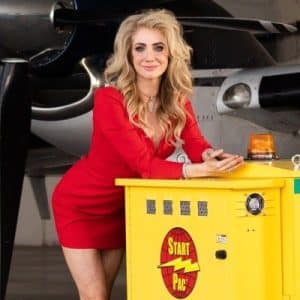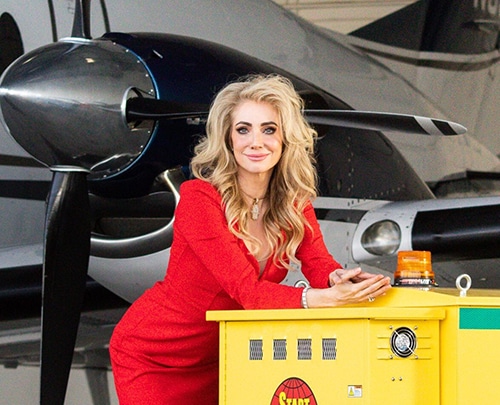
What is the Configuration Deviation List (CDL)?
Picture yourself getting ready for a journey by car. You have gathered all the necessary items, but a small incident, such as the absence of a hubcap, confuses and unsettles you.
Although it can be discouraging, it is unlikely to hinder your ability to travel. Likewise, in aviation, certain non-structural external parts, such as fairings or panels, may be absent without compromising the safety of the flight. This is the point at which the Configuration Deviation List (CDL) comes into play.
Key Components of the CDL
But what is CDL in aviation? Well, in simple words, consider the CDL as a pre-authorized exemption granting freedom from certain non-structural components that are absent. It is a comprehensive inventory compiled by the aircraft producer, typically located within the Aircraft Flight Manual (AFM), which outlines these particular elements with precision.
The CDL aviation could potentially encompass additional elements for every item that is specified.
- Flight conditions or performance may be subject to specific restrictions in the presence of a missing component, as specified by operating limitations.
- Performance adjustments may be necessary in certain situations where a component is missing, potentially impacting the overall performance of the aircraft. Such modifications might involve increased takeoff distance, for instance, and will be outlined in CDL aviation.
Definition of Configuration Deviation
So, what precisely is a configuration deviation? It essentially denotes any circumstance in which the aircraft’s arrangement deviates from its original design as a result of the absence of a non-structural component.
It is important to recall that CDL aviation solely pertains to authorized exceptions, ensuring the aircraft remains airworthy.
Identification of Components Listed on the CDL
The composition of the aviation CDL can differ based on the specific aircraft type and its design. Nevertheless, typical illustrations encompass:
- Fairings are coverings that are not part of the structural framework but serve to enhance aerodynamics and shield internal components from outdoor elements.
- Panels are installed on diverse areas of the aircraft’s outer surface, commonly for accessibility or examination.
- Access doors refer to non-essential entrances that are designated for maintenance or gaining access to equipment.
It is essential to keep in mind that the configuration deviation list does not encompass any structural elements or essential systems necessary for ensuring a secure flight, including the use of a ground power unit which plays a critical role in maintaining aircraft readiness and safety while on the ground.
Regulatory Framework and Compliance
The CDL has a vital role in upholding aviation safety and adhering to regulatory frameworks established by governing entities.
Regulatory Bodies
Some of these entities comprise:
- The regulatory body for aviation in the United States, is known as the Federal Aviation Administration (FAA).
- The aviation regulatory body known as the European Union Aviation Safety Agency (EASA)
- Civil Aviation Authorities (CAAs) across different nations
These establishments set forth standards and supervise the creation and execution of the aviation CDL to guarantee its appropriate usage and compliance with safety regulations.
Legal Requirements and Obligations for CDL Compliance
Airlines and other entities operating aircraft bear a legal responsibility to adhere to the CDL, necessitating their fulfillment of certain requirements.
- Ensure that a current and authorized CDL item tailored to their particular aircraft model is maintained.
- It is imperative to acquaint all individuals participating in aviation activities with the CDL and its associated consequences.
- Comply with all operational restrictions or adjustments in performance that are linked to the absence of a specific element stated in the CDL.
- Abstain from operating the aircraft if an absent component is not specified on the CDL, or if it jeopardizes the structural soundness or security of the aircraft.
Application in Aircraft Operations
The CDL plays a crucial role in the daily functioning of aircraft, offering a level of adaptability by permitting flights to continue despite minor issues with non-structural components, as long as they adhere to the CDL’s requirements.
Ensuring that specific deviations remain within approved parameters, can assist in mitigating delays and disruptions while upholding safety standards.
Understanding the Impact of Configuration Deviations
It is crucial to acknowledge the potential consequences of configuration variances, even if they have been authorized by the CDL.
Aircraft performance can be compromised if certain elements are absent, leading to potential consequences on fuel efficiency, range, and the aircraft’s handling characteristics.
Influence on Aircraft Performance and Safety
Although the CDL exclusively acknowledges approved deviations that are considered safe, it is imperative to thoroughly evaluate the potential safety consequences of any deviation, particularly when combined with other variables.
Approval Processes and Documentation
Acquiring approvals for supplementary non-structural components within the CDL framework entails a meticulous procedure that is supervised by the appropriate regulatory authority.
Obtaining CDL Approvals
This generally encompasses:
- To initiate the formal procedure, it is necessary to submit a request to the regulatory body that outlines in detail the specific component and provides justification for its inclusion on the CDL.
- Offering thorough technical information and analysis that illustrates the influence of the absent element on the aircraft’s overall performance and safety.
- Subjecting the proposed deviation to meticulous scrutiny and assessment by the regulatory body to ensure that all safety and compliance prerequisites are met.
Aircraft Categories and CDL Application
The utilization of the CDL may exhibit slight variations based on the specific category of aircraft.
Distinctions in Application for Different Aircraft Types
Now, let’s take a closer look at the main distinctions for different aircraft types:
- Commercial Aircraft
When it comes to commercial aircraft, the regulations and approval processes for CDL are usually more stringent in comparison to those for general aviation aircraft.
- General Aviation
In the world of general aviation, although the CDL continues to be applicable, the authorization procedure may be relatively less intricate for specific non-essential elements. Nevertheless, ensuring safety remains of utmost importance.
Challenges and Considerations in CDL Management
Effectively handling the CDL presents a unique set of difficulties:
Monitoring and Updating the CDL
It is essential to ensure the currency of the CDL. Regular evaluation and modifications of the CDL may be necessary due to the introduction of fresh data or alterations to aircraft systems.
Addressing Safety Concerns and Operational Impact
To handle safety concerns, it is important to recognize that unforeseen problems or newly emerged safety issues may occur, necessitating a thorough assessment and possible modifications to the CDL, even with approved deviations.
Training and Education on CDL
Guaranteeing adequate training and effective communication is part of the picture as well! It is essential to offer thorough training to all individuals engaged in flight operations, ensuring their comprehension of the CDL, its constraints, and the significance of adhering to its guidelines.
Let’s Recap!
The Configuration Deviation List CDL plays a crucial role in upholding seamless and secure aircraft operations by serving as an essential instrument.
By comprehending what is CDL in aviation its objectives, constituents, and regulatory structure, aviation personnel can guarantee the responsible implementation and adherence to rules. This allows them to effectively handle scenarios where certain non-structural elements may be absent, all while prioritizing safety and fulfilling legal requirements.
Contact us if you’re looking for professional help to better understand the intricate world of aviation.




